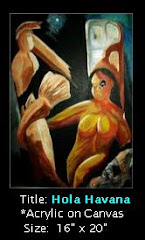
I suppose everyone has that one special musician that, above all others, captivates them. The one that you can listen to, again and again, and never grow tired of hearing.
For me, it is the incomparable Django Reinhardt . . . partially because of his phenomenal musical prowess . . . and partially because of the enormous adversity he had to overcome to become the best jazz guitarist of his time.
I’ll admit that I came to know Django’s music rather late in life. I grew up first, on the pop standards of my parents, and later on the offerings of American Bandstand and our local AM radio station. Typical, I guess, for a child of the 50s and 60s.
But in my early twenties (in 1975) I ended up with a vintage Victrola, one very similar to the one pictured below.

Along with it I had a serious collection of 78 RPM records. Some were from the 1920's, while others were from the 1940's and even early 1950's.
I loved the music it played.
Billy Murray and the American Quartet, The Andrews Sisters, Paul Whiteman's Orchestra, Al Jolson, Allan Jones, Bing Crosby, Sachmo, and Eddy Duchin . . . but my favorites were those by Django Reinhardt.
Whether you called it Swing guitar, Jazz guitar, or Gypsy Guitar (it was all three), I loved it. And do to this day.
I eventually had to sell the the player and my collection when I moved aboard a sailboat, and for a time, I was exiled from the music I loved. But the advent of the Internet, and places like the Internet Archive, give me and others a place to go to relive those memories.
If you are unfamiliar with the incredible story of Django Reinhardt, I’ve a 45 minute documentary for you to view. You’ll not only hear, and see rare footage of Reinhardt, you’ll see other great jazz musicians of the 30s and 40s as well.
And course, I’ll lead you to several repositories of Reinhardt's music. A few months ago, I profiled Les Paul, and he often said that Django was one of his heroes.
Both artists had to overcome severe injuries in order to play . . . Les Paul from a car wreck, and Django Reinhardt from a fire killed his wife, burned him badly, and left two fingers of his left (fret) hand paralyzed.
Doctors predicted that neither of them would ever play the guitar again, and both proved the doctors wrong.
To compensate, Django had to develop his own, unique way of playing, using his two good fingers to play solo notes, and using the paralyzed fingers only for chord work.
The documentary runs 45 minutes and is available in 5 parts on YouTube, or in it’s entirety from a `tube’ site in the Netherlands.
In 1934 Django and violinist Stéphane Grappelli (along with Django’s brother and two other musicians) formed the Hot Club de France Quintet, and changed swing music forever. I’ll spare you a rehashing of Django’s career, since these videos do such a good job of showing it.
The Full version plays after a 30 second commercial, and can be accessed here.
The Youtube version is divided into 5 10-minute parts.
PART 1
PART 2
PART 3
PART 4
PART 5
A search of YouTube will return dozens of recordings, along with montages of photos, of Django and his band.
The Internet Archive has digitized recordings off of the original 78s for you to download and enjoy.
One of my favorites has to be the collaboration of Les Paul, Chet Atkins, and Django all playing together.
Click the link to hear/download Limehouse Blues.
Each one of these links will take you to 9 or 10 recordings, dozens in all. You can listen by clicking on the embedded player at the top right of the screen, or download and save them to your computer using the individual links.
Django Reinhardt-41-50 - Django & Stéphane Grappelli
Django Reinhardt-51-60 - Django & Stéphane Grappelli
Django Reinhardt-61-70 - Django Stéphane Grappelli
Django Reinhardt-01-10 - Django Reinhardt
Django Reinhardt-11-20 - Django Reinhardt
Django Reinhardt-21-30 - Django Reinhardt
Django Reinhardt-31-40 - Django Reinhardt
Django Reinhardt-71-80 - Django & Stéphane Grappelli
And we’ll finish up with a 2-hour radio tribute to Django from Capitol Public Radio at Sacramento State University
Tonight we pay tribute to the great gypsy guitarist and jazz pioneer Django Reinhardt. Along with several selections from a 2-CD collection called "The Indespensible Django Reinhardt," we'll hear from author/illustrator Bonnie Christensen. She has a new book out aimed at young readers called "Django: World's Greatest Jazz Guitarist."













